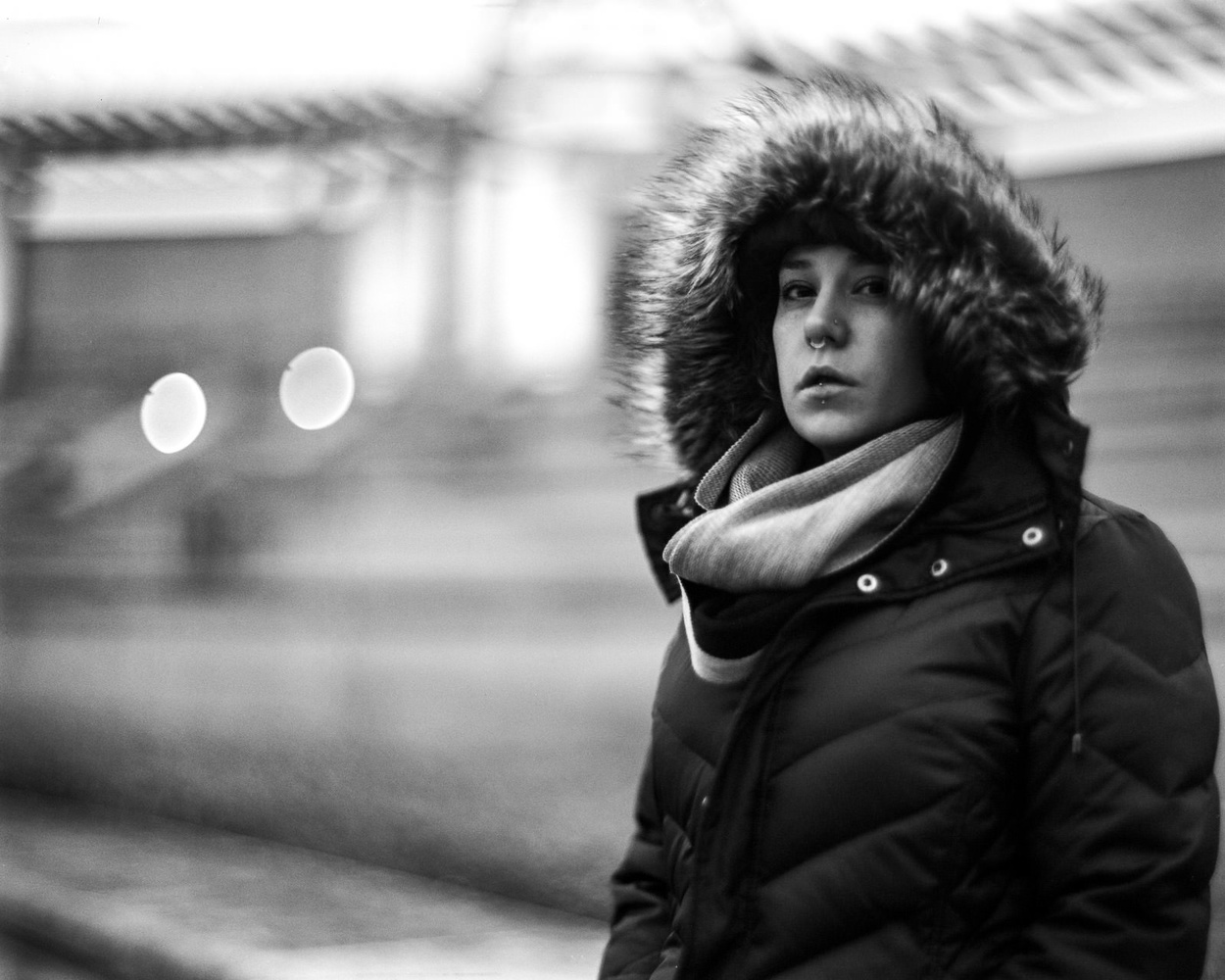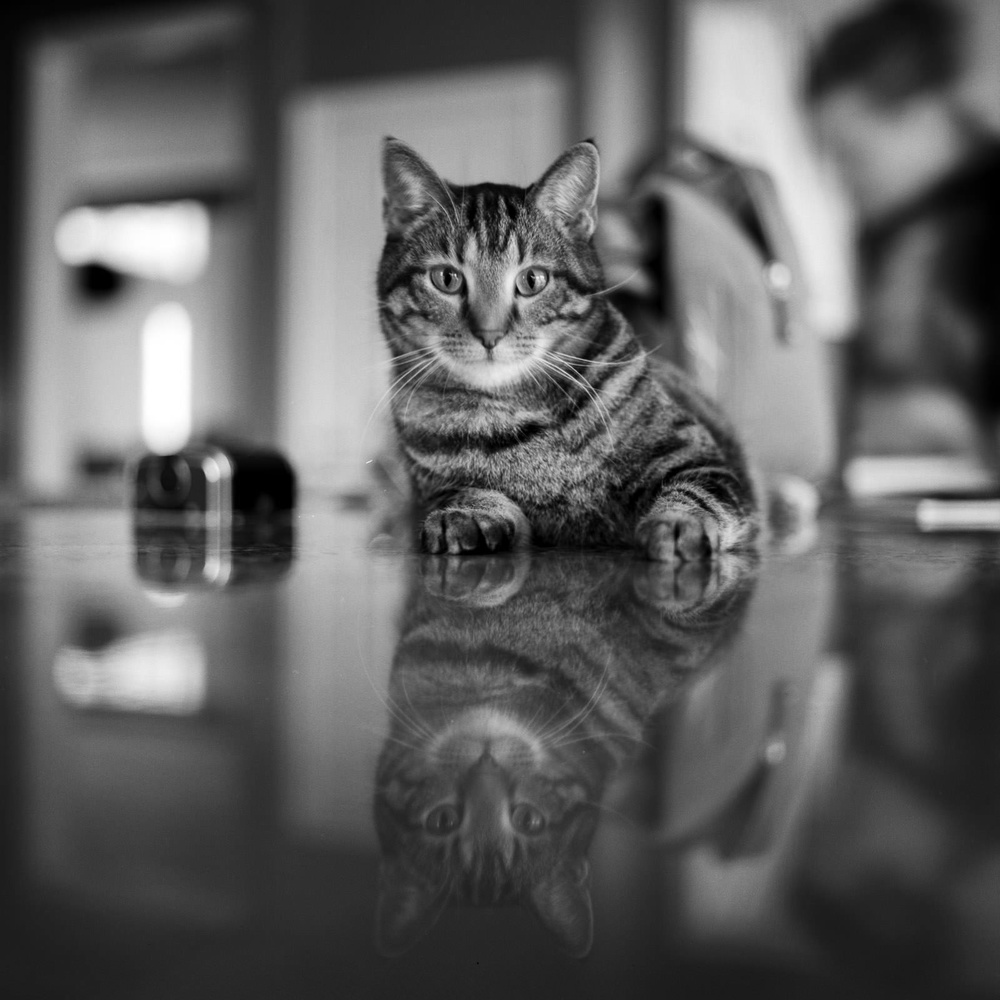Faster, higher, stronger is the code by which I have made most of my lens and camera decisions for nearly a decade. I've never been satisfied with f/2.8. I've waged war between the focal planes of the eye and the eyelash, and I have the scars and image casualties to prove it. As I grow older and my battle-weary eyes begin to look back at my quest, I have begun to see the emptiness in it all. Were even my perfect shots completely out of focus?
It all started with f/1.8.
On the urging of a hobbyist friend, the "nifty fifty" nursed me from my fledgling state and set the foundation for what would become my photographic passion. When I began, I had no other friends in the world of serious photography, aside from my coworker at the time. While really not long ago, the internet of 2007 was a vastly different landscape for beginners than it is today. It was harsh and unforgiving. It was a time Flickr reigned supreme, the iPhone with it's 2.0 megapixel camera didn't have an app store, and Facebook displayed images at a mammoth 604px on the long edge. Asking for advice was ego suicide as old-timers were hostile to those that didn't understand basic technical concepts. While I suppose not much as changed there, overall there weren't nearly as many great easy-to-consume beginner resources as there are today. This was the golden age of point-and-shoots. Digital SLRs were finally exiting puberty, but were priced far outside the scope of most hobbyists. With my drool-worthy 10 megapixel crop-sensor Nikon D80 and 50mm f/1.8, I was the talk of my friends. "Look at how blurry that background gets!" I remember them saying. A shallow depth of field had become the hallmark of a professional photographer because, in the digital age, only they could afford the cameras that could achieve such a surreal world.
I loved the look. I loved the attention. I ran with it.
As is my millennial nature, I could only be satisfied for so long until I could discover the next best thing. Fortunately the upgrade path was being carved out for me as Nikon released their D3 and D700 full-frame bodies the very next year. As a concert photographer from the very beginning of my journey, the low-light capability of large aperture "fast glass" had always appealed to me in addition to the background blending feature. My primary motivation for upgrading to a larger sensor was for the low light capability, but when I discovered that a larger capture medium equates to shallower depth of field, I was fueled once again in my bokeh quest.
And with that, I spiraled out of control.
A larger sensor was able to lasso in more bokeh, so what else can I do?
What else can I do?
I can shoot film! For the price of a moderately nice lens I can buy a medium format film camera that has a "sensor" almost six times larger than my full-frame D700!What else can I do?
What else can I do?

Leica M3 with Zeiss C-Sonnar 50mm f/1.5, a lens known for its significant field curvature creating an exaggerated and and somewhat "swirly" out of focus region.
What else can I do?

Three frame bokeh panorama (Brenizer Method) with the Nikon AF-S Nikkor 58mm f/1.4, a lens with significant field curvature designed specifically for its bokeh.
What else can I do?
I can take the fastest f/1.2 lens I own and tilt it away from the camera body to bend the plane of focus leaving almost nothing in the photo in focus!What else can I do?

The ultimate bokeh machine: Graflex Speed Graphic 4x5 with Kodak Aero Ektar 175mm f/2.5. This produces large format negatives with a 35mm equivalent of about 48mm @ f/0.7.
And then it hit me. Why? I mean, I get it. After you scrape away all the obsessiveness and technicalities, it's still a neat look. After all, human beings don't see the world with such compressed two-dimensionalism, and photography has always been about telling the unseen story. In a sense, shallow depth of field is a mechanism for story telling in its own right. It forces the viewer to pay attention to exactly what you think they should be paying attention to. But the trope, like many other amazing tools, becomes worn out.
More importantly, the quest for bokeh has blinded me to what photography is truly about; it's about using the entire frame to tell a story. I have thirty-six megapixels in my hand right now. Why can't I use every last one towards a focused purpose? What really drove home the disconnect between "effect" and "affect" was this gallery of powerful photos from the past 150 years. It dawned on me that almost all of the greatest and most famous photos of all time had deep or moderately deep depth of field. Not only that, but the photos that had shallow depth of field were mostly out of necessity from either low light conditions or being taken on large format film. Blurry backgrounds do not make the photo. The stories do.
So I removed the Leica Noctliux 50mm f/0.95 from my shopping cart.
Chasing bokeh isn't just distracting, but it's expensive. Those exotic lenses are the definition of expensive, and sometimes you end up buying entire new camera systems just to achieve the next high. It's especially sobering when you realize people like my buddy Andrew Griswold are making their living shooting with their iPhone. Between the lenses you don't really need that aren't improving your photography, and the cameras that just sit on a shelf and collect dust, is a heap of money you could use to travel to any location on planet earth and take photos there. I'm talking to you, photographer that doesn't live in the Pacific Northwest or Iceland.
Shallow depth of field certainly has its place, especially in portraiture, so it's not like I'm going to start shooting everything at f/8, but the realization is that I need to be satisfied with where I am and what I've got. I really don't need to keep chasing the fix, and I can be happy with my work now. It's really time for me to get some help, and the first step is admitting I have a problem.
I'm Sean and I'm a bokeholic. It's been one day since my last Brenizer panorama.











"I'm Sean and I'm a bokeholic. It's been one day since my last Brenizer panorama." ****ing brilliant! lol Great article!
Hey, Fstoppers. Sean deserves a raise.
Though I don't agree with most of what the conclusion was (since I'm at the peak of my bokeh-junkie-ness), I have to agree with all the people saying this article redeemed some of the "meh" that was in most of the FStoppers articles for a while. I started watching this portal 2 years ago and passionately reading all the articles, cause they felt true and in depth as actual opinions and thoughts of actual people, not just news and how-tos.
I admire you have an Aero Ektar on the Speed Graphic, I have the Aero on a Pentax 6x7 on an elastic mount, so I can tilt and swing it as well. The thing with most bokeholics/bokeh junkies (and I can see you were amongst them) is the quest for shallower depth of field but without a particular aesthetic. Most of the well known "bokehlicious" lenses have a creamy-silky-smooth quality that is completely void of character to me. Some of the Soviet Helios lenses and old Zeiss designs they were copied from, have much more character. The Ektar, being a double gauss is just as painterly as it gets. And my quest is to get the most painterly images out of that combo, without going to compositing and heavy post processing. So the Noctilux 50/0.95 isn't a drool imposing lens to me, the Canon rangefinder 50/0.95 "Dream Lens" would be much better for my purposes.
I may someday find myself in the position you are in the article. But for now my passion for shallow DOF is not shallow DOF in itself, but how does it combine with my ideas for images and the mood I'm trying to convey.
Godspeed to all bokeh junkies, but don't be junkies just for the amount of bokeh, be junkies of specific qualities of it.
I certainly took my "plight" and applied some artistic liberty to it, but ultimately I'm totally with you. I'll never stop loving shallow depth of field, but I'm definitely more appreciative of its quality and not the quantity.
Unfortunately using the Speed Graphic is so much work, I tend to use my Pentax 67ii + 105 2.4 more often. You're also right about the Noctilux. It's a sweet lens, but I actually am more drawn to something like the Konica Hexagon 60mm f/1.4 for its rendering, which is that same vein as the Canon 0.95.
Brilliant article Sean!
It sounds sort of the "story of my life".
"I have got 64 mega pixels in my hand right now..."
I that what we are calling it ;) Ha!
Great article and relates to so many people.
I belive a lot of these techinques are great to copy,
you do them to death and get fed up.
Then one day you use 10% of a technique and really make it your own.
Keep up the good writing Sean.
Well written!
You might want to check out deep focus if you want to examine a radically different style, far away from the bookeh balls...
Loved this line! "Blurry backgrounds do not make the photo. The stories do."
Great piece and good luck with your recovery ;)
Just a heads up, my antivirus is losing it's mind about that website you linked. Here is a link to the imgur gallery.
http://imgur.com/gallery/cyVnF
Weird. That's a pretty reputable site.
Probably just my TrendMicro being over protective.
LOVED the way this article was written I could almost hear him speak. The topic on point and clear, best of all informative and entertaining ... thank you for your info great article!
Have to love the fact that the first picture you see has extremely shallow Brenizer -like DOf: "What really drove home the disconnect between "effect" and "affect" was this gallery of powerful photos from the past 150 years." LOL!